The Art of Mourning
Few exhibitions have ever touched me deep inside the way the work of Doris Salcedo does, shown until October 12th at the Guggenheim Museum in New York.
They say Salcedo’s work shows signs of a return to the feelings in contemporary art: she introduces a deeply human vision in her work.
Born in Colombia, Doris Salcedo has seen from very close the political violence, thousands of people killed, tortured, massacred, disappeared, a fact that seems is not going to change and that society seems to be immunized. Millions of people have lost their lives cruelly and their memories were never honored properly; families waiting for their relatives to come and whose lives remain in a sort of limbo forever.
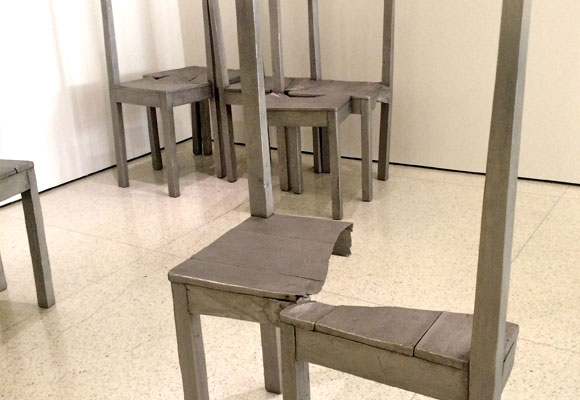
Doris Salcedo’s work shows the texture of violence, pain, absence, emptiness, but her sculptures and installations are elegant and poetic. With her work she intends to dignify the memory of the victim and to be able to generate in the viewer a moment of silent contemplation because, according to the artist, only then we will be able to reflect, to leave the turmoil of everyday life and feel, pause and understand so we can try to end that suffering.
In most of her work, she uses everyday materials, furniture, clothing, personal items that suggest a collective mourning.
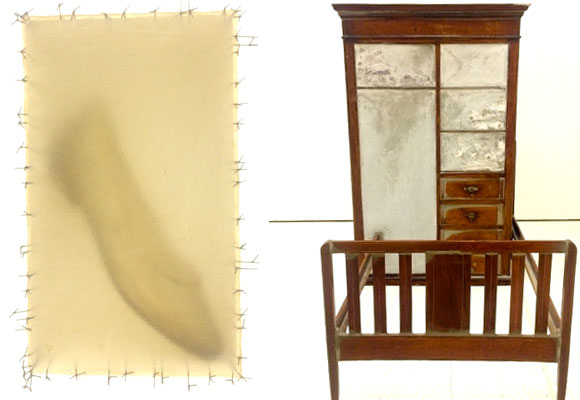
Colombia unfortunately is not an isolated case and her work refers to a multitude of crimes against humanity, violence, injustice, civil wars that never end, people who are forced to leave their land for the only purpose of staying alive, political corruption, torture, disappearances, abuse of power, deaths and murders, drug trafficking. Unfortunately our daily routine in many parts of the world.
Violence and horror that accumulate and generate a kind of insensitivity to this horror in our society. There is a danger that we end up not seeing these acts of violence because then, that would be the beginning of the end of the essence of the human being.
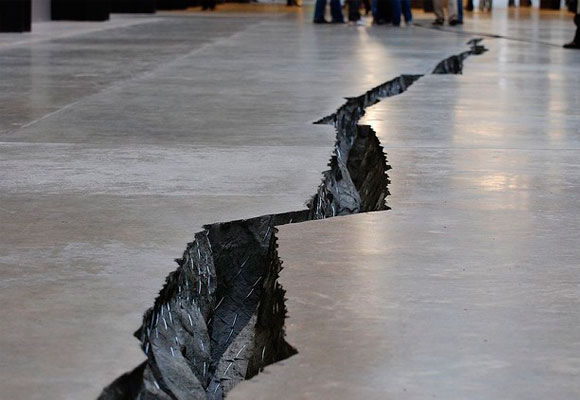
The retrospective of her work shown at the Guggenheim Museum in New York is an exhibition that started in the Museum of Contemporary Art, Chicago, and will move to the Museum of Art Perez in Miami, on May 2016.
Few Latin American artists have had this recognition in the United States. Besides, her work has also had a big impact worldwide: she was the eighth artist to show in the turbine hall of the Tate Moderm in London with her «Shibboleth» in 2007. In 2010 she received the Velazquez Award Plastic Arts from Spain, the first woman and the first Latin American to receive this award. In 2014 she won the Hiroshima Art Prize awarded to artists who have promoted peace worldwide. All these prizes and awards are in recognition of her «consistent path» and her ceaseless work about «suffering is not forgotten.»
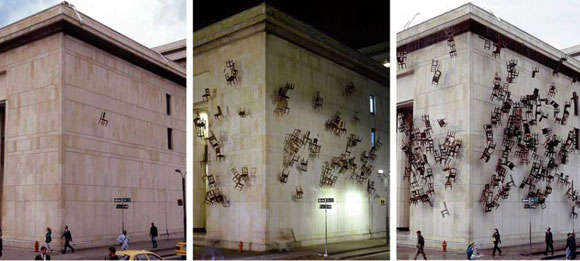
One of the things that struck me the most of Doris Salcedo is that the person and her work are one. She says she has been working on this issue obsessively throughout her life. She stated that she has never lost a family member from violence but Salcedo clearly bears the scar of pain in her gut. Her work is based on rigorous field work, including testimonies of victims who have suffered loss and trauma due to war or other unfair circumstances.
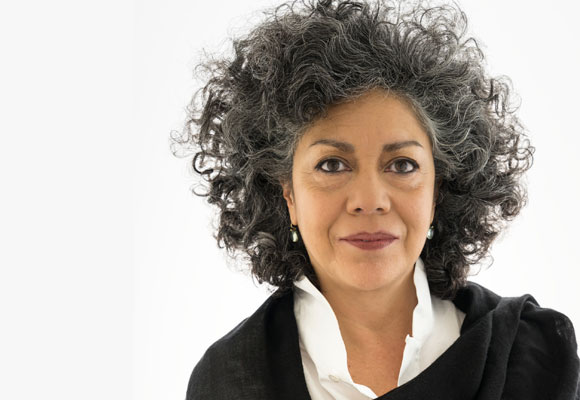
Listening and watching her in different interviews is when you understand the dimension of her work. Doris has always dressed in dark, her face, expressive big eyes, intense look, her unique and unforgettable presence framed in a voluminous and white hair that frame her face as an aura. And then her voice, which comes from deep inside, slow, thoughtful words, a voice that echoes the pain of those victims, the missing, those who live on the periphery of life, at the epicenter of the disaster.
Doris Salcedo’s work occupies four floors of the Tower’s galleries of the Guggenheim Museum and show her most significant works produced since the 80’s to the present.
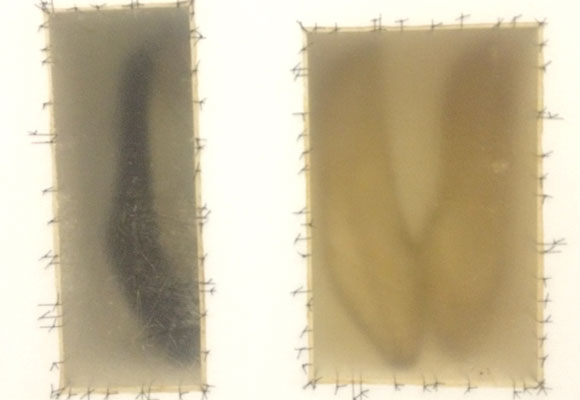
When visiting this exhibition it is really important to go down to the basement where you can watch an interview of about 10 minutes, where she talks about her work. Her work is intense and can be hard to see without knowing and understanding the depth of it: only then we might experience that moment of quiet contemplation that allows us to think, to reflect, to feel.
Her metaphysical and somewhat abstract work flees the depiction of violence, «Violence creates images permanently in our society, the purpose of art is to oppose these images to those images and thus create a balance to the barbarism that occurs repeatedly in the world». These are the sculptures and installations exhibited at the Guggenheim Museum in New York that impacted me the most.
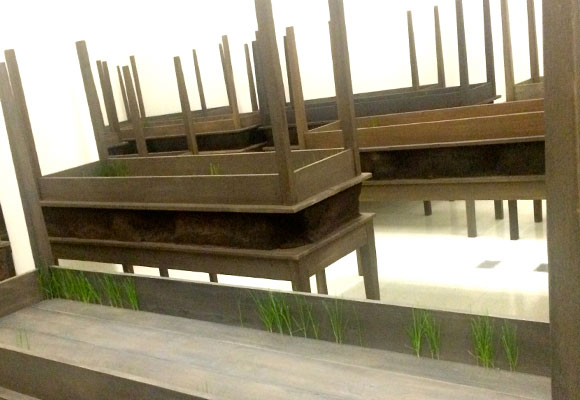
‘Plegaria Muda’
This installation was began by investigating cases of violence with gunfire in Los Angeles. Many of the young victims belonged to lower socioeconomic classes, deaths went unnoticed precisely because they were people who have lived on the edge of society.
The work represents mass graves where mothers have been desperately searching for their missing children. The installation has a large number of pieces, composed of two tables the size of a coffin, a table inverted over the other and between them a layer of earth.
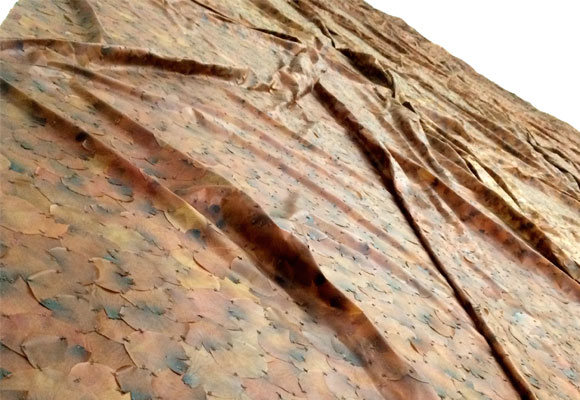
«A flor de piel»
This piece began with the simple intention to make a wreath to a victim of violence to who was cruelty thrown from life, the victim was a nurse, tortured, murdered and finally dismembered.
How can you rebuild a mutilated body, how to represent this untouchable wound? Doris Salcedo sought the most fragile way to touch the untouchable, creating a blanket of rose petals, sewn with medical sutures, representing the fragility and vulnerability of life.
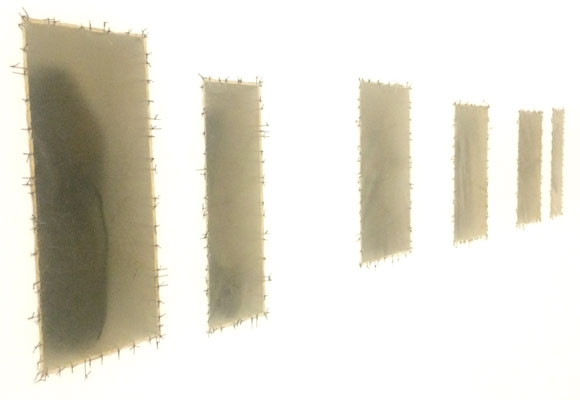
«Atrabiliarios»
Researching on missing people, she found that female victims were treated with particular cruelty and the shoes were often personal items that were lost and were often used to identify the remains.
In Atrabiliarios, she uses old shoes, thery are locked in niches embedded in the wall covered with a layer of animal bladder have been stitched with medical sutures. There remains a semi-translucent surface where the image that is inside the niche looks to vanish.
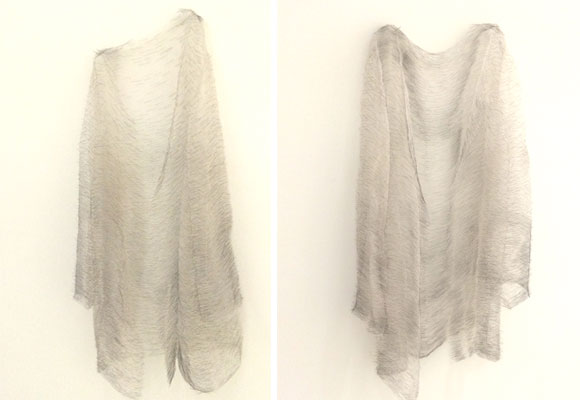
«Disremembered»
«I wanted to make a piece that would represent the fragility of a person in pain and also the incredible damage that occurs in certain families who experience grief as part of their daily lives.» Each of these sculptures are made of raw silk with about 12,000 needles. The fragility, the lightness of these pieces is touching, something almost ethereal, they look they are going to evaporate in the blink of an eye.
